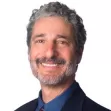Safety
Jaywalking Not As Big A Safety Issue As Assumed
Over the past 15 years, more than 76,000 pedestrians have been killed in the U.S. Some say preventing a significant portion of these deaths is as simple as enforcing jaywalking laws. Not so, argues Tom Vanderbilt, author of Traffic.
Safety and Gender in Los Angeles
Enci Box's personal account of how gender, safety, and living car-free intersect in her daily transportation decisions.
Rail Safety Improvements Years Away
Head-on train collisions can be avoided by simply keeping one train per track. There's a plan to make that happen, but it's years from implementation.
More Terrifying Than Texting?
In this survey, drivers 'fess up to twelve distracting things they do while driving; and some are even more distracting than texting.
Rethinking the Street Space: Why Street Design Matters
Streets aren't just for driving, and cities are starting to realize it. Amber Hawkes and Georgia Sheridan explain why street design matters and where we are today in terms of designing the "street space."
Safety in Immigrant Numbers
A high rate of poverty, a large population of illegal aliens, and a next-door neighbor to one of the most dangerous cities in the hemisphere, El Paso would seem to be a hotbed of danger. But it's actually one of the safest big cities in America.
Inspection in Philly After D.C. Crash
SEPTA of Philadelphia will inspect train-control signals made by the same company that made the signals on the Metro in D.C, where a possible signal malfunction is under investigation in the recent train crash.
'Death Wish' and the Life of Great American Cities
City streets need only few things to make them safe, according to the famous urbanist Jane Jacobs. She says safe streets need people walking around, places for them to go, things for them to do and other people for them to interact with. Simple as that. But Jane forgot one more thing: a sock full of quarters.
Planning for True Security
Most people have a highly distorted view of the risks they face, which skews their decisions and ultimately reduces their happiness. We live in one of the safest times and places in history, yet, many people live in constant fear, and respond in ways that actually reduce overall security. This is a major obstacle to efficient transportation, healthy living, and livable community.
Cars, Kids, and a Safer Environment Through Planning
Urban areas are filled with cars, and this creates an unsafe environment for children. This commentary argues that officials need to regain their faith in the power of planning to address the issue.
Post-9/11 Safety Provisions Challenged
Safety codes recommended by NIST after analyzing the collapse of the World Trade Center are being challenged by another federal agency on the grounds they will be too costly.
A Struggle Between Security and Civil Rights at Beijing's Olympics
Security is a major concern during large public events like the Olympics. The Chinese government is making preparations for a safe event, but could they go too far?
Kids Afraid to Play in Public
A recent report by The Australian Commission of Children and Young People reveals that kids in Sydney are too afraid to play outside or ride the bus.
Manhole Theft Plagues Philadelphia
The rising value of iron and steel has prompted thieves to steal an alarming amount of manhole covers from Philadelphia's streets.
Bike Language: the Wave, the Yell and the Nod
City cycling can be hectic. Let's be realistic: most American cities are not meant for cyclists. It would be great if they were, but for now, our city forms are primarily designed for the movement of cars. Because cities are made for cars, it's understandable that car drivers tend to disregard the fact that somebody might be riding a bike out there. (Interchange blogger Mike Lydon recently wrote an excellent piece about planning for bicycle networks.) Until our urban forms and public policies encourage the use of roads by a variety of transportation types, the burden is on cyclists to assert their role in the transit jungle. Communication is key to achieving this goal. Safe cycling (and safe transportation in general) relies heavily on communication. Safe cyclists speak bike language -- a rudimentary system made up of three main components: the wave, the yell and the nod.
Of Cyclepaths and Psychopaths
Cyclists Bill Reynolds muses on the freedom offered by the bicycle -- and the tragic tendency for cyclists to fall victim to automobiles.
NYC To Experiment With Car-Free Zone
In an effort to increase livability, New York City will test a 6.9 mile car-free corridor during the month of August.
A Laser Light Show in the Crosswalk
Will laser-projected pedestrians make crossing the street safer in South Korea?
Wi-Fi Plans Dropped Over Health Concerns
Officials in the California city of Sebastopol have gone back on an agreement with an Internet provider that was planning to create a municipal Wi-Fi network for the city. They cited health concerns in their decision.
Biking In Indianapolis Like 'Russian Roulette'
High rates of accidents and few bike lanes make Indianapolis a dangerous place to ride a bike, according to this article.
Pagination
Licking County
Barrett Planning Group LLC
City of Cleburne
HUD's Office of Policy Development and Research
Mpact Transit + Community
HUD's Office of Policy Development and Research
City of Universal City TX
ULI Northwest Arkansas
City of Laramie, Wyoming
Urban Design for Planners 1: Software Tools
This six-course series explores essential urban design concepts using open source software and equips planners with the tools they need to participate fully in the urban design process.
Planning for Universal Design
Learn the tools for implementing Universal Design in planning regulations.




























